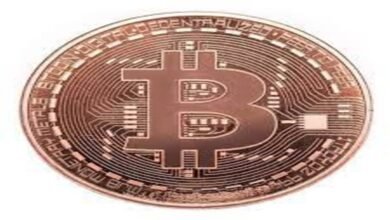
Payments refer to the transfer of money or value between parties in exchange for goods, services, or to settle
debts. They are a fundamental part of the economy and come in various forms, ranging from cash and checks to digital transactions via credit cards, bank transfers, and cryptocurrency.
In the context of decentralized payment networks like XRP, payments are processed in a more direct, instant, and cost-effective manner compared to traditional systems.
Let’s break down the key types of payments and how decentralized networks like XRP are transforming the landscape:
1. Traditional Payment Methods
- Cash: Physical currency used for face-to-face transactions.
- Bank Transfers: Payments sent via banks, often requiring intermediary banks, making them slow (especially for international transfers).
- Credit/Debit Cards: Payments made through cards issued by banks and credit card companies. These require card processors (like Visa or Mastercard), which can charge fees for transactions.
- Checks: Paper-based payments, which can take time to clear and settle, especially for cross-border transactions.
2. Digital Payment Methods
- Electronic Funds Transfer (EFT): Transferring funds between bank accounts electronically, typically used for direct deposits, bill payments, and wire transfers.
- Online Payment Systems: Platforms like PayPal, Venmo, Stripe, and Square enable businesses and individuals to make payments online using credit/debit cards or bank accounts.
- Mobile Payments: Systems like Apple Pay, Google Pay, and Samsung Pay that allow users to make payments using their smartphones.
3. Cryptocurrency Payments
- Bitcoin, Ethereum, Litecoin, and other cryptocurrencies allow for peer-to-peer (P2P) payments without intermediaries, and decentralized networks like XRP are increasingly being used to facilitate these transactions.
- Advantages of using cryptocurrencies like XRP for payments:
- Speed: Payments can be processed within seconds, especially with XRP, which is designed for quick cross-border transactions.
- Lower Fees: Cryptocurrency payments generally have lower transaction fees compared to traditional payment methods, especially for cross-border transactions.
- Global Accessibility: Cryptocurrencies can be accessed and used by anyone with an internet connection, regardless of geographic location.
- Security and Transparency: Blockchain technology ensures that payments are secure, transparent, and irreversible once confirmed, minimizing fraud.
4. Decentralized Payment Networks (Like XRP)
Decentralized payment networks use blockchain technology to enable peer-to-peer transactions without relying on intermediaries like banks or payment processors. This offers several distinct advantages:
- Instant Settlement: XRP transactions are processed within 3-5 seconds, which is much faster than traditional bank transfers that may take several days, especially for cross-border payments.
- Low Fees: The transaction fees for using XRP are fractions of a cent, compared to the often hefty fees charged by banks or payment gateways for international transfers or credit card transactions.
- Security: Transactions are cryptographically secured, and the decentralized nature of the XRP Ledger ensures there is no single point of failure, making it more resistant to hacking or fraud.
- Global Reach: XRP facilitates cross-border payments efficiently, bypassing the need for traditional currency exchanges, which can be time-consuming and expensive.
How XRP Works in Payments:
- XRP as a Bridge Currency: XRP acts as a bridge currency for cross-border payments. When transferring funds between different fiat currencies (e.g., USD to EUR), XRP can be used to provide liquidity and settle the transaction instantly without needing to convert into the currencies directly, thus reducing time and costs.
- RippleNet: Ripple’s payment network uses XRP to facilitate fast, low-cost international payments between banks and financial institutions.
5. Decentralized Finance (DeFi) Payments
- DeFi platforms, which are built on decentralized networks like Ethereum or XRP, allow for a range of financial services like lending, borrowing, and payments without traditional financial intermediaries.
- Users can engage in smart contract-based transactions that automatically execute when certain conditions are met, enabling secure and efficient payments without needing a third party.
- Examples of DeFi payment systems include lending platforms, decentralized exchanges (DEXs), and decentralized stablecoin systems.
6. Peer-to-Peer (P2P) Payments
- P2P payments allow users to send money directly to each other, without intermediaries. This is commonly done via mobile apps like Venmo or Cash App, but cryptocurrency networks like XRP also support P2P transfers.
- XRP’s ability to facilitate cross-border, instant P2P payments without relying on traditional banking systems provides users with greater flexibility and fewer barriers to sending and receiving funds globally.
7. Micropayments
- Micropayments refer to payments involving very small amounts of money, often less than a dollar. These are becoming more common with the rise of digital content consumption (e.g., pay-per-view articles, streaming, or gaming).
- XRP is particularly well-suited for micropayments due to its low transaction fees and speed, enabling tiny payments to be processed efficiently without incurring high fees.
Why Decentralized Payment Systems (like XRP) are Transforming Payments:
- Faster and More Efficient: Decentralized payment systems like XRP can facilitate instant settlement of transactions, reducing the time it takes to transfer funds across borders and improving cash flow for businesses.
- Lower Transaction Costs: Traditional financial systems, especially for international payments, are often burdened with high fees due to intermediaries and foreign exchange costs. XRP helps reduce these fees, making payments more cost-effective.
- Enhanced Security: By using blockchain technology, decentralized networks provide a secure and transparent method of transferring funds. Once a payment is recorded, it cannot be altered or reversed, ensuring that the funds are transferred as intended.
- Financial Inclusion: Decentralized payment systems give those without access to traditional banking services the ability to participate in global commerce. All that’s needed is an internet connection to send or receive payments.
:
Payments are central to economic activity, and decentralized payment systems like XRP are making payments faster, cheaper, and more accessible globally. Whether it’s a simple local transaction or an international payment, decentralized networks offer a more efficient alternative to traditional systems by eliminating intermediaries, reducing costs, and enabling near-instant settlement. With these benefits, decentralized payment systems are poised to play a significant role in reshaping the future of finance.



